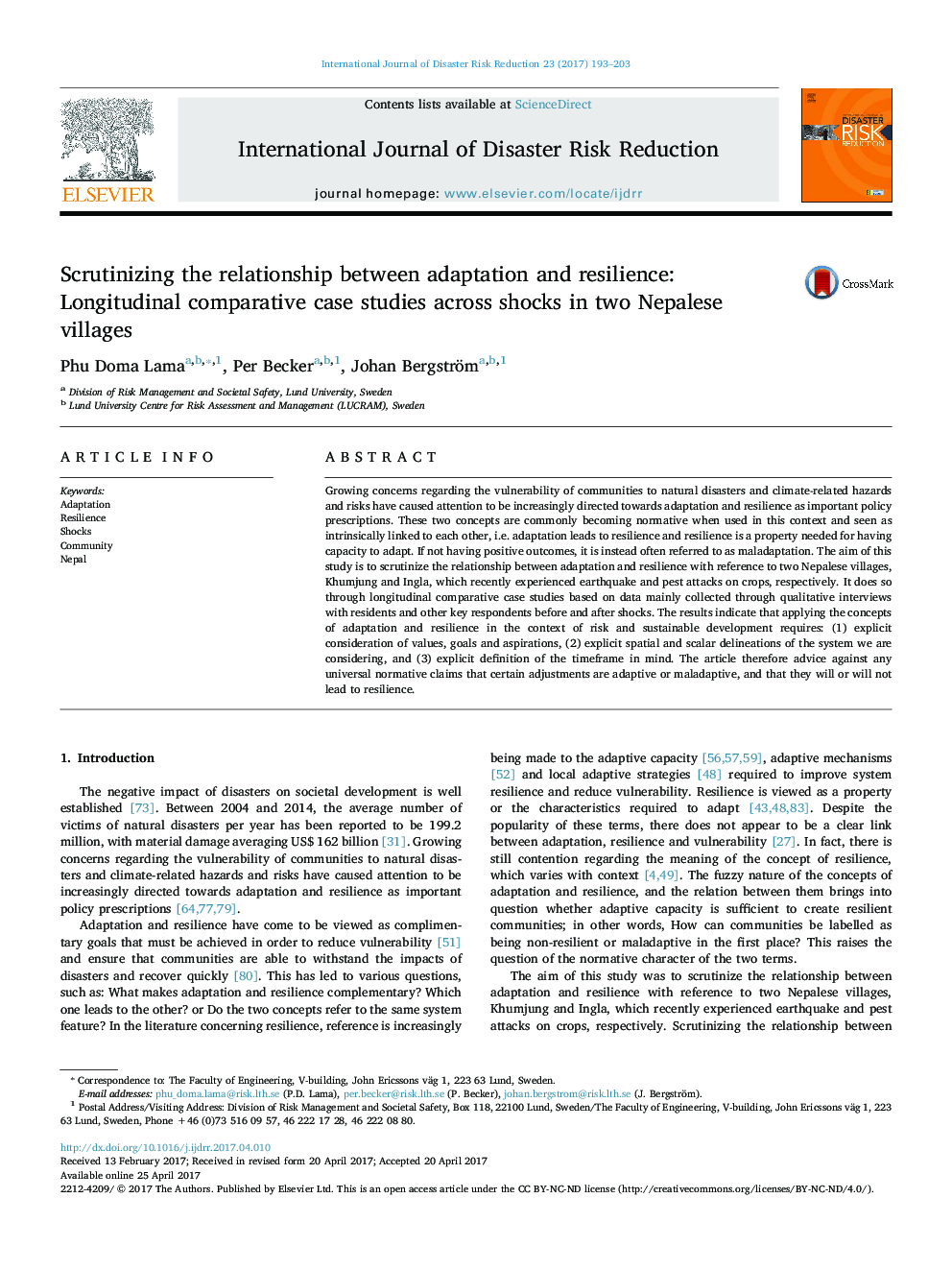| Article ID | Journal | Published Year | Pages | File Type |
|---|---|---|---|---|
| 5116133 | International Journal of Disaster Risk Reduction | 2017 | 11 Pages |
â¢Complimentary relationship between adaptation and resilience scrutinized.â¢Longitudinal study of adaptation and resilience across major disasters.â¢Awareness and explicit definition of values as well as spatial and temporal scale are essential for normative approaches to adaptation and resilience.
Growing concerns regarding the vulnerability of communities to natural disasters and climate-related hazards and risks have caused attention to be increasingly directed towards adaptation and resilience as important policy prescriptions. These two concepts are commonly becoming normative when used in this context and seen as intrinsically linked to each other, i.e. adaptation leads to resilience and resilience is a property needed for having capacity to adapt. If not having positive outcomes, it is instead often referred to as maladaptation. The aim of this study is to scrutinize the relationship between adaptation and resilience with reference to two Nepalese villages, Khumjung and Ingla, which recently experienced earthquake and pest attacks on crops, respectively. It does so through longitudinal comparative case studies based on data mainly collected through qualitative interviews with residents and other key respondents before and after shocks. The results indicate that applying the concepts of adaptation and resilience in the context of risk and sustainable development requires: (1) explicit consideration of values, goals and aspirations, (2) explicit spatial and scalar delineations of the system we are considering, and (3) explicit definition of the timeframe in mind. The article therefore advice against any universal normative claims that certain adjustments are adaptive or maladaptive, and that they will or will not lead to resilience.
